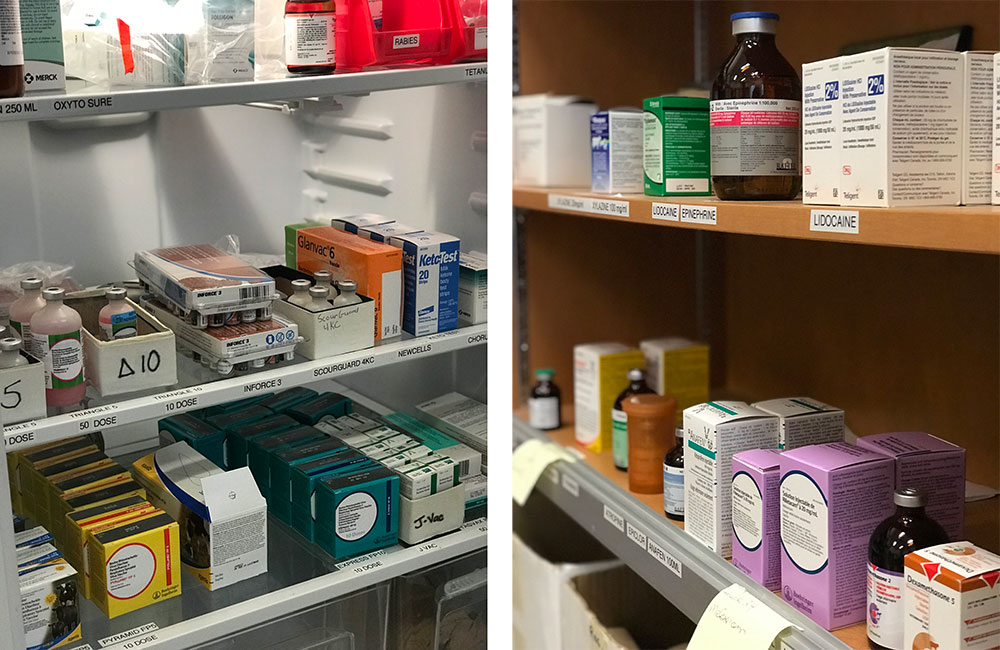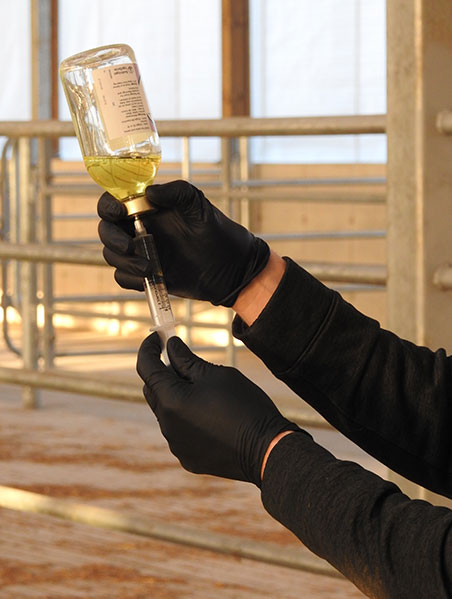Section 1 | An Introduction to Livestock Medicines
Page 03 /
Important Definitions
It is important to make sure everyone understands the common terms that will be used throughout the course.
Microbes: What are those bugs?
A microbe is an extremely small organism that can only be seen using a microscope. There are several classes of microbes — some of them cause disease in humans and/or animals, but the majority of them are either harmless or beneficial to life.
-
Bacteria
Bacteria are a type of single-celled microbe that can live and grow in a variety of places, including in soil and water; on and in animals, plants, and humans; on or in virtually any surface, structure, or ecosystem in the world! Diseases caused by bacteria include Salmonella and necrotic enteritis
-
Viruses
A virus is an extremely small microbe – much smaller than a bacterium. These microbes are not truly considered “alive” — they cannot reproduce on their own. They need to hijack the function of the cells they infect in order to divide. Diseases caused by viruses include Marek’s Disease, bovine viral diarrhea (BVD), equine influenza, and porcine reproductive and respiratory syndrome (PRRS)
-
Fungi
A fungus may or may not be a microbe. They include organisms such as mushrooms, yeast, and moulds. They are found in soil, air, and water, with most species not causing disease. Diseases caused by fungi are called mycoses, and include such infections as ringworm and yeast mastitis
-
Parasites
Parasites are single- or multi-celled organisms that live in or on an animal or plant. Depending on the species and host, their impact on the animal ranges from harmless to extremely severe and sometimes fatal. Some examples of parasites include tapeworms, roundworms, and coccidia
So What is a Drug?
A drug includes any substance or mixture of substances manufactured, sold, or represented for use in:
- The diagnosis, treatment, reduction, or prevention of a disease, disorder, or abnormal physical state, or its symptoms, in humans or animals
- Restoring, correcting, or modifying functions in humans or animals
- Disinfection of the premises in which food is manufactured, prepared, or kept
)
Source: ACER Consulting
Brand Names
Many are familiar with the brand names of drugs (e.g. Excenel®, Nuflor®, Depocillin® etc.). This is the distinctive name or trademark identifying the drug product of a particular manufacturer. This is also known as the product name. Pharmaceutical companies use their brand names to market their products and distinguish them from the competition.
Active Ingredient
Within any brand named product, the active ingredient is the part of the drug that’s doing all the work. For instance, the active ingredient of Excenel® is the 3rd generation cephalosporin known as ceftiofur. This ceftiofur molecule is the part of the drug that kills bacteria.
Antimicrobial
An antimicrobial is a general term used to indicate drugs or other substances that kill or slow the growth of microbes. Antimicrobial drugs include:
| Drug | Active against |
| Antibiotic | Bacteria |
| Antiviral | Viruses |
| Antiparasitic | Parasites |
| Antifungal | Fungi |
Antimicrobial
An antimicrobial (colloquially known as an antibiotic) is a medicine that kills or slows the growth of bacteria. Commonly used antimicrobials include penicillin and oxytetracycline.
)
Vaccine
Vaccines are drugs that contain inactivated versions of microbes that cause disease. When the body “sees” a vaccine, the immune system kicks into action and clears the system of whatever microbe is in the vaccine. The immune system can “remember” this vaccine microbe, so that if at a later point in time the animal is infected with that particular microbe, it can react VERY quickly to aid in preventing the microbe from dividing and causing disease.
What are Drug Residues?
A residue is a substance that remains in meat, milk, eggs, or honey (any food product). Residues may result from either treatment of a live animal with a specific substance, or contamination of the food product (e.g. carcass, milk, eggs, honey) anywhere in the food chain.
Typically, we divide residues into 3 broad categories:
- Chemical – e.g. antimicrobials, dewormers
- Physical – e.g. scars, broken needles
- Biological – e.g. bacteria, viruses
Contamination means that the food product has been made impure by having contacted another substance (e.g. chemical, physical, biological). Using drugs in food animals creates the possibility that their food products could become contaminated, further raising the risk of residues.
Why be concerned about residues in food?
Protecting our food supply from contamination and residues is vitally important.
Some of the negative consequences of residues in food include:
- Residues may cause allergic reactions in humans that consume the contaminated food
- Consumer confidence could be shaken if they think the food they eat is contaminated
- Some countries will not tolerate any residues in food products. If our products are contaminated and other countries find out, it could severely affect international trade